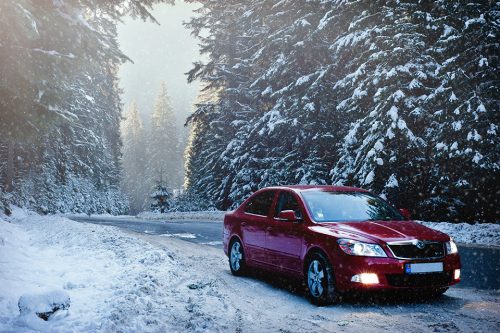
Your automobile may suffer damage from severe weather. Therefore, your automobile requires proper upkeep to be in peak shape during the monsoon, summer, and winter seasons.
Winter is upon us! The winter months bring a whole new set of issues and elements that will have an impact on your automobile. The approach of winter necessitates taking extra precautions with your vehicle. This article offers comprehensive advice on winter auto maintenance to maintain your car in good working order in the chilly weather.
-
Check your car lights:
In addition to the temperature, fog is another factor that calls for winter automobile maintenance advice. Visibility is the main factor a fog situation has on your driving ability. You must thus make sure that your lighting systems are in excellent condition. The foglamps are more crucial to cutting through the fog than your car’s headlights. Nowadays, front fog lamps are nearly standard equipment in automobiles, and rear fog lamps are also becoming more prevalent.
-
Tyre pressure:
One of the more crucial recommendations on our cold weather driving advice relates to tire pressure. A very basic physics principle that applies to all things governs how air functions. It grows as it becomes hotter and contracts as it gets colder. These impacts are felt in terms of tire pressure within your tire. Your car’s tire pressure rises in the summer and falls in the winter due to temperature variations. As a result, it is advised that you check your tires pressure more regularly than usual.
-
Brakes:
Your safety depends on your brakes, which should undergo routine inspections. This refers to the whole braking system, which includes the brake pads, brake disc, caliper, and brake fluid. Even while using the greatest amount of power, one might not always be aware that the brakes are ineffective, which is often brought on by an air bubble in the braking fluid lines or even fully worn-out brake pads. To avoid this, be sure to check the brake system as well.
-
Cabin air filter:
Late-model vehicles and trucks frequently fail to maintain their cabin air filters. A clogged cabin air filter may not seem like a necessary maintenance task, but it significantly limits airflow through your car’s heater, placing stress on the blower motor and causing the blower motor resistor to overheat.
It pays to repair your cabin air filter before the heating and cooling season since replacing a blower motor on certain automobiles may cost $400.
-
Coolant:
It’s essential to check the level of your coolant or antifreeze as part of your car’s winter maintenance. In the cold, fluids tend to thicken. Of course, this affects how effectively the parts of your automobile function.
At the very least, for older cars, the conventional advice is to clean and replace the coolant every two years. Modern automobiles might take up to five years. You can refer to your owner’s manual if you want to be assured.
-
Wipers:
No matter how skillful you are behind the wheel, poor sight makes it impossible for you to drive to your full potential. For this reason, in the event of rain or snow, you must have completely working wiper blades.
Wiper blades now often last a year. Beam blade-type wipers are a good option for the winter since they lack an external spring that might freeze up.
There are more preventative maintenance suggestions besides wiper replacement that you may follow on your own. These consist of raising your wipers and shutting them off when you stop. The latter will prevent the wiper motor from overheating.
-
Engine oil:
Again, since oil is a fluid, it must be on your list of winter maintenance tasks. For optimum winter operation, it is always preferable to have fresh, clean oil.
Ask the person conducting the service to use just the weight and viscosity of the oil suggested by the manufacturer if you don’t make oil changes yourself. You could also think about permanently using synthetic oil.
Conclusion:
Don’t forget to use your car’s heater and defroster in addition to the items already listed. You’ll also require a professional to examine your exhaust system. Remember that exhaust gases within your car’s interior might be hazardous.
Make sure your emergency kit is prepared and packed for increased security. Bring additional gloves, shoes, blankets, and flares, among other items. A flashlight, extra batteries, some food, and your phone charger are other items to have on hand.
If there is one last piece of advice we can give car owners, it is to not skip out on ordinary, regular maintenance.
Interesting Related Article: “Important Basics You Need to Know About Car Maintenance“

